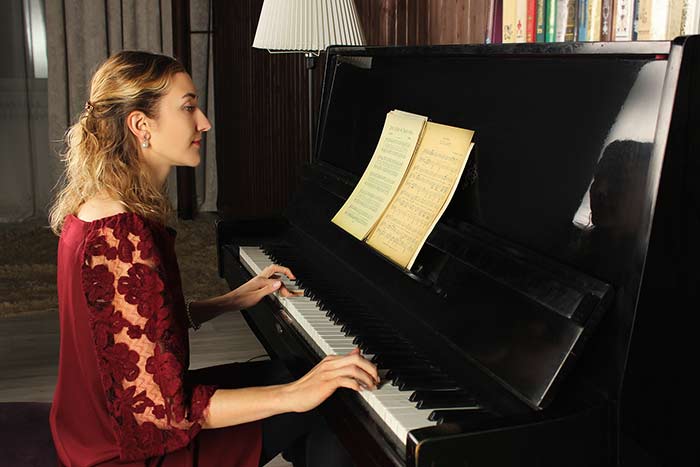What you need to know in Mastering a new piece in one lesson. We will take Debussy’s Reverie as an example to showcase a comprehensive guide to expression, technique and musicality.
“Réverie” by Debussy is a nuanced piece that requires attention to detail in terms of colour, phrasing, and balance between both hands. Here’s an expanded plan that includes these aspects to effectively convey these musical elements to students in a single piano lesson:
1. Introduction to the Piece (5 minutes)
Briefly introduce Claude Debussy and the “Réverie” piece.
Discuss the overall mood, character, and unique qualities of the piece.
2. Exploring Colour and Tone (10 minutes)
Play excerpts from “Réverie” that showcase Debussy’s unique harmonic language and the variety of colours in the piece.
Discuss the use of pedal, touch, and dynamics to create different shades of color.
Encourage the student to experiment with the piano’s tone and explore different colors to express the piece’s mood.
3. Understanding Phrasing (15 minutes)
Identify phrases and musical lines in “Réverie” that contribute to the overall structure and flow of the piece.
Discuss the importance of shaping phrases with dynamic contrasts, articulation, and breath-like pauses.
Work on specific passages to emphasize the shaping of phrases and encourage the student to listen for the musical line’s continuity.
4. Achieving Balance Between Both Hands (15 minutes)
Focus on passages where both hands interact closely, highlighting the balance and interplay between them.
Discuss the importance of balance, clarity, and voicing to ensure each hand’s musical line is heard distinctly.
Practise hand coordination exercises to improve balance and synchronization between the hands, paying attention to the independence of each hand’s rhythm and dynamics.
5. Interpretation and Musicality (10 minutes)
Explore Debussy’s expressive markings, tempo fluctuations, and character indications throughout “Réverie.”
Rubato: Discuss the use of rubato in “Réverie” to freely express the music’s emotional content. Encourage the student to explore tempo flexibility, stretching and compressing time within phrases while maintaining the overall flow and structure of the piece.
Discuss how to convey the piece’s emotion, imagery, and narrative through thoughtful interpretation, including the use of rubato to enhance expressiveness and musical storytelling.
Encourage the student to connect with the music personally and expressively while maintaining technical control and attention to detail.
6. Conclusion and Homework Assignment (5 minutes)
Summarise the key points covered during the lesson, emphasising the importance of colour, phrasing, and balance in interpreting “Réverie.”
Assign specific practise tasks focusing on these musical elements, including exploring different colours, shaping phrases, and achieving balance between both hands.
Provide encouragement and positive feedback to motivate the student and inspire them to explore Debussy’s “Réverie” further.
Tips for a Successful Piano Lesson:
Use descriptive language and imagery to help the student connect emotionally with the music and understand the intended musical expression.
Listen to recordings of “Réverie” together to inspire interpretation and discuss different pianists’ approaches to the piece.
Encourage the student to experiment with musical ideas and interpretations, fostering creativity and personal expression.










